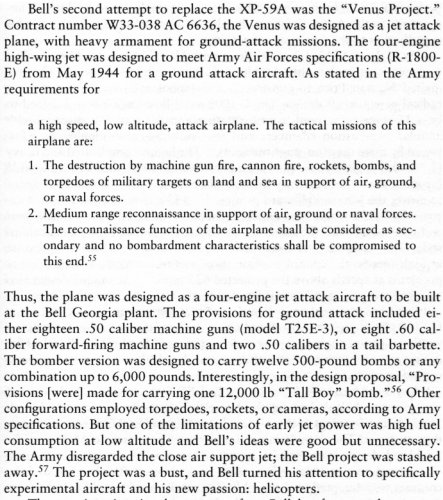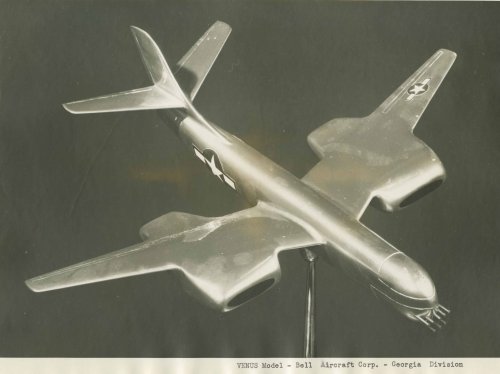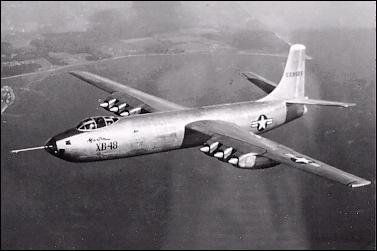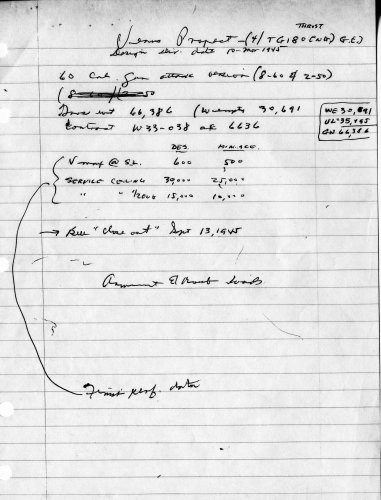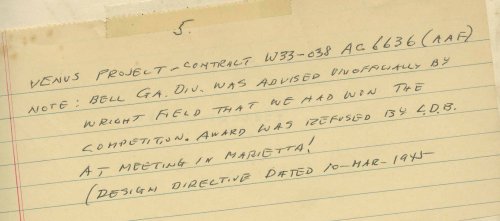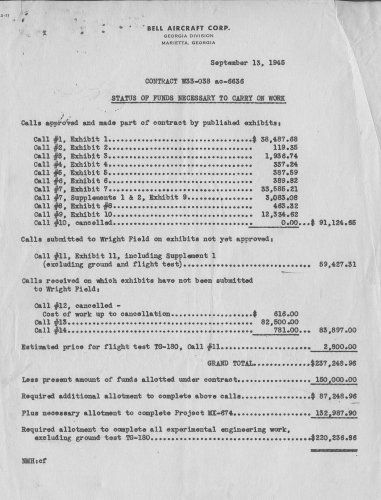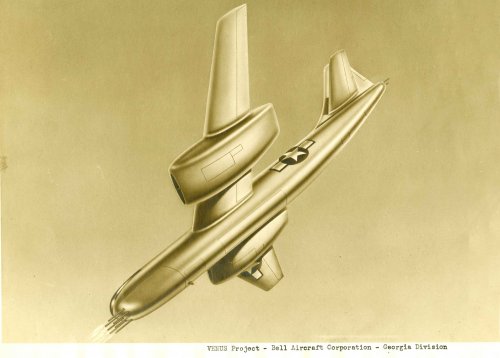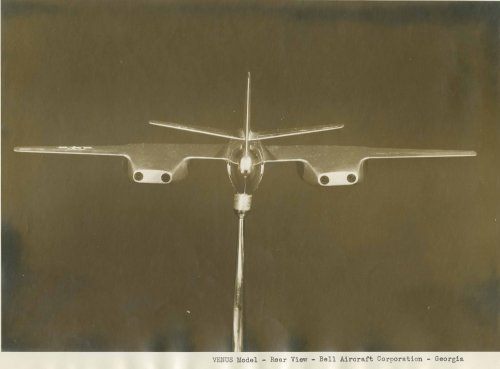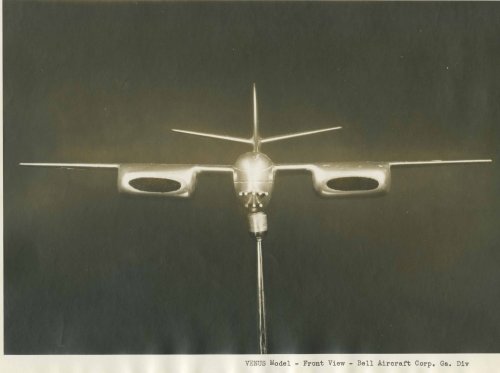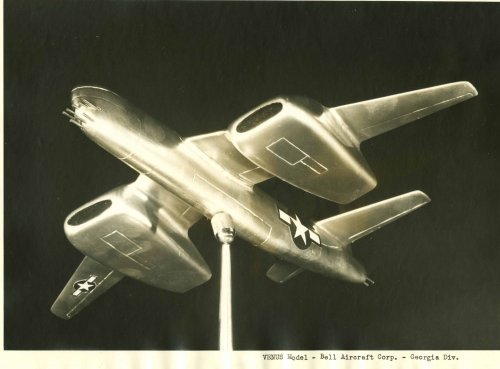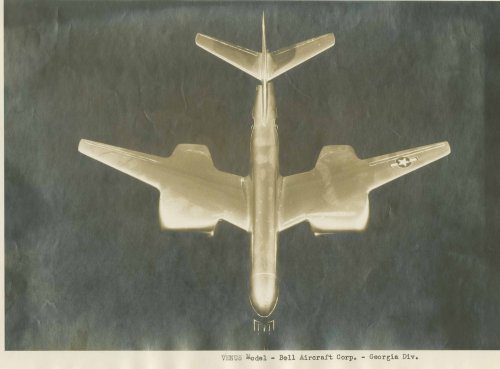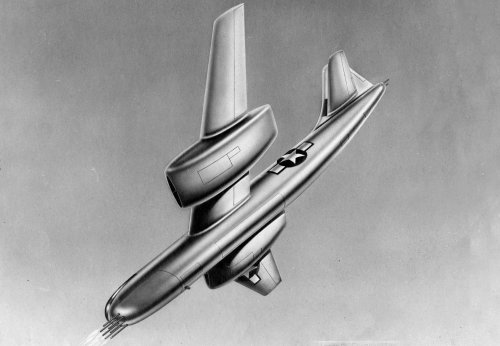- Joined
- 22 January 2006
- Messages
- 4,216
- Reaction score
- 2,018
Just finishing "The Jet Race and the Second World War" by Sterling Michael Pavelec. I enjoyed the story very much and I've learnt a lot.
http://www.amazon.com/Jet-Race-Second-World-War/dp/1591146666/ref=sr_1_1?ie=UTF8&s=books&qid=1277485918&sr=1-1
On page 137 I found a great surprise: Bell "Venus Project"
I've attached the description published in the book to ask members for more info about Army Air Forces specifications R-1800-E, rival designs if existed and Bell Venus drawings
Thanks in advance
Antonio
http://www.amazon.com/Jet-Race-Second-World-War/dp/1591146666/ref=sr_1_1?ie=UTF8&s=books&qid=1277485918&sr=1-1
On page 137 I found a great surprise: Bell "Venus Project"
I've attached the description published in the book to ask members for more info about Army Air Forces specifications R-1800-E, rival designs if existed and Bell Venus drawings
Thanks in advance
Antonio

